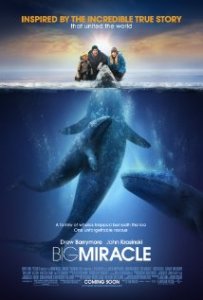 When I moved to Israel, I had trouble understanding the political system here. Unlike the United States, there are many, not just two, political parties jockeying for power. In the recent elections, I saw first hand the implications of this multi-party system. Every party has its own agenda and pushes it strongly. However, when there is a crisis and one issue dominates everyone’s thinking, then the smaller parties promote the larger party in order to insure that the issue driven by crisis is resolved for benefit of the entire nation. Crisis brings everyone together, even if in ordinary circumstances they would not agree on anything.
When I moved to Israel, I had trouble understanding the political system here. Unlike the United States, there are many, not just two, political parties jockeying for power. In the recent elections, I saw first hand the implications of this multi-party system. Every party has its own agenda and pushes it strongly. However, when there is a crisis and one issue dominates everyone’s thinking, then the smaller parties promote the larger party in order to insure that the issue driven by crisis is resolved for benefit of the entire nation. Crisis brings everyone together, even if in ordinary circumstances they would not agree on anything.
The notion that crisis brings people of different viewpoints together is at the heart of Big Miracle, a family film about the extraordinary rescue of whales who, as they make their 5000 mile annual migration, are trapped because of rapidly forming ice in the Artic that blocks their route to the open sea.
Adam Carlson, a TV newsman working in Barrow, Alaska, would like warmer climes and a broader marketplace for his talents, but destiny gives him an opportunity to pursue a great human interest story just when his commitment to being in Barrow is flagging. When he reports on the local news about the plight of the trapped whales, the story is picked up and featured on the national networks. His ex-girlfriend, Rachel Kramer, an avid environmentalist working for Greenpeace, encourages Adam to enlist the aid of everyone to save the whales both because it is the right thing to do and because it is good public relations to participate in the rescue effort. Representatives from oil companies who want to drill in wilderness areas and environmentalists, normally hostile enemies, join ranks to save the whales. Moreover, journalists of competing entities descend on Barrow to witness the rescue attempt and to write about a story that is mesmerizing people around the world.
Soon a working coalition forms between the local Alaskan whale hunters, environmental advocates, and the oil drilling companies. Even the American and Russian militaries join to free the trapped whales. Each employs a different strategy to rescue the whales, but all strategies are coordinated with one another.
The Midrash tells us that when the Jews first came to Egypt, they were twelve tribes who saw themselves possessing a common destiny as articulated by their father Jacob. Once there, however, factions developed over time; and as the slavery of the Jews progressed, there was more friction between the people. Only when the punitive decrees of Pharoah intensified did they become more unified. Adversity drove them together, until finally at Sinai, the unity of Israel was restored as they accepted the Torah as one, unified nation. A common goal took disparate elements of a nation and melded then into one people.
This reality of working for a common purpose is what underpins the miracle in Big Miracle. It is a familiar case of different interest groups leaving their personal baggage at home because of a desire to fulfill a larger purpose that transcends the individual.
This is an important insight to keep in mind when building bridges between people and institutions. A focus on the big issues that connect people enables one to accomplish a lot more than one individual could. An illustrative example is the requirement in Jewish law for the presence of ten men for communal Jewish prayer to take place. There is no requirement that the ten men think alike or practice their faith in identical ways. All they have to do to reach God is to stand together as one.
Way too earnest for its own good. Even if it is dealing with some real issues that deserve to be addressed. Nice review.
Thanks for sharing.